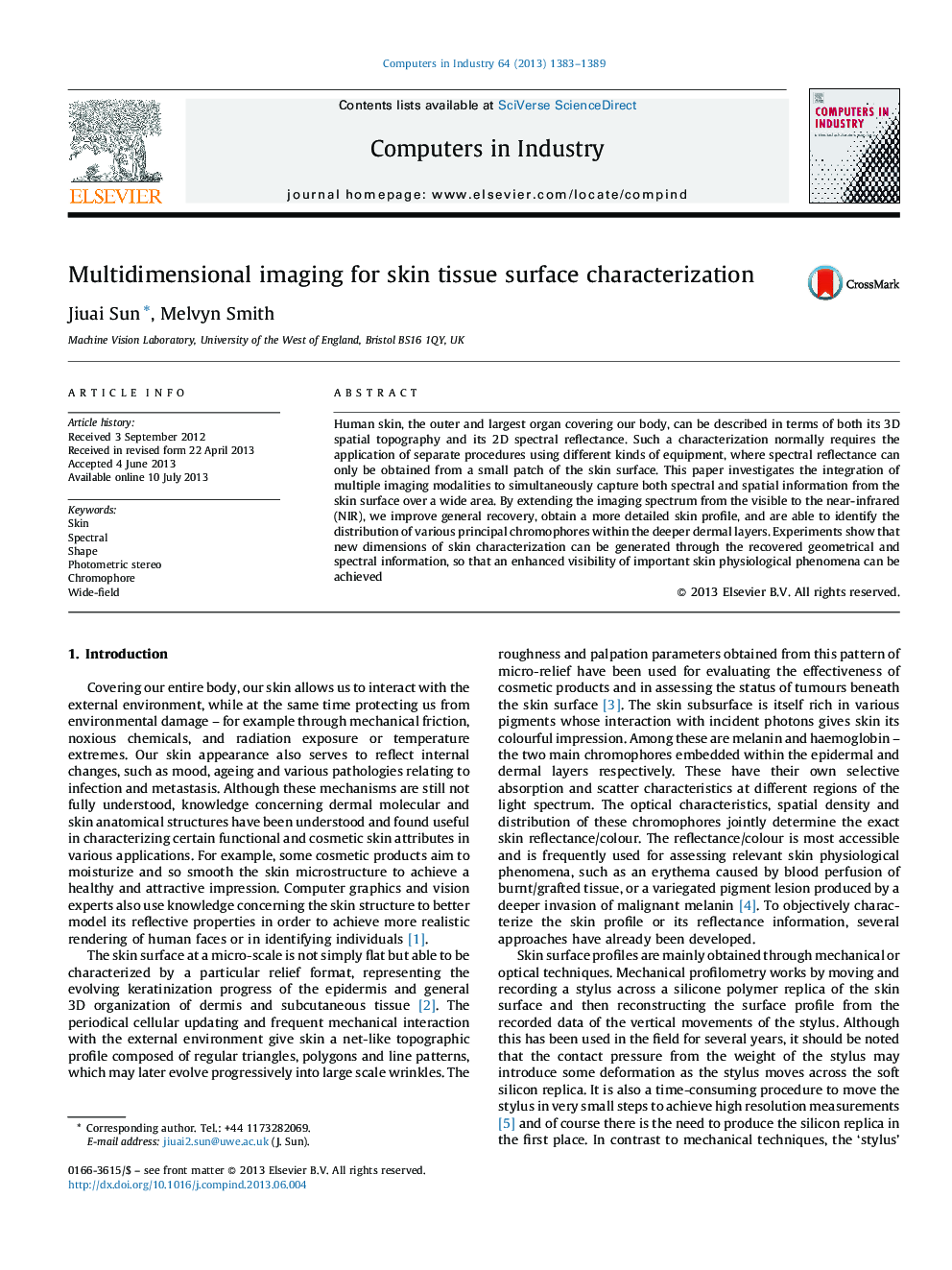| Article ID | Journal | Published Year | Pages | File Type |
|---|---|---|---|---|
| 508628 | Computers in Industry | 2013 | 7 Pages |
Human skin, the outer and largest organ covering our body, can be described in terms of both its 3D spatial topography and its 2D spectral reflectance. Such a characterization normally requires the application of separate procedures using different kinds of equipment, where spectral reflectance can only be obtained from a small patch of the skin surface. This paper investigates the integration of multiple imaging modalities to simultaneously capture both spectral and spatial information from the skin surface over a wide area. By extending the imaging spectrum from the visible to the near-infrared (NIR), we improve general recovery, obtain a more detailed skin profile, and are able to identify the distribution of various principal chromophores within the deeper dermal layers. Experiments show that new dimensions of skin characterization can be generated through the recovered geometrical and spectral information, so that an enhanced visibility of important skin physiological phenomena can be achieved
